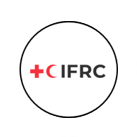Typhoon Rai, locally named Odette, hit the Philippines on 16 December 2021, ravaging islands and coastal communities in the east and flooding towns and cities across the country. Philippine Red Cross emergency teams mobilized immediately to provide vital humanitarian assistance, reporting widespread devastation to homes and livelihoods. Through this Emergency Appeal, the IFRC supports the Philippine Red Cross to deliver longer-term recovery efforts for an estimated 400,000 people.
The IFRC’s Shelter Cluster coordination team, consisting of a Cluster Coordinator and an Information Management Officer, provided in-country support in response to Typhoon Rai/Odette to more than 20 partners, with coordination structures being set up at the sub-national level. The Department of Human Settlement and Urban Development were co-leading the Shelter Cluster. 510’s Heleen Elenbaas was deployed on the 28th of December 2021 as the Shelter Cluster IM coordinator until the 12th of March 2022. Here she ensured that relevant, timely, and accurate information products, processes, systems, and tools are used to allow evidence-based coordination:
- Coordinate with the cluster partners
- Compile and analyze this data to avoid gaps and duplications
- Prepare information products
- Coordinate with OCHA and other clusters to allow for inter-cluster data analysis
Organization overview
To ensure emergency responses are coordinated efficiently the UN Cluster System was developed. The 11 clusters cover the different affairs which has a standard lead agency. In case of Shelter (natural disaster) this is the IFRC.

UNOCHA Cluster System
For this operation, a partner map was developed in order to have a clear overview that shows which organization is present for every area of the affected region. This is important because this makes it easy for every organization to know who does what and where.

Partner map of one of the affected regions
Priority identification
In order to identify priority areas, 2 maps were developed. This was done by building a Pre-crisis shelter vulnerability index (see below left). Indicators such as poverty, building typology, distance to the typhoon track, and urbanity (if municipalities were urban or rural) were combined to indicate the shelter vulnerability (1 being low vulnerability and 5 being high vulnerability).
A damage severity index (see below right) was also created which is based on the number of damaged buildings compared to the total number of buildings. In this map complete destruction of a building results in a higher score than partially damaged buildings. (1 being low damage severity and 5 being high damage severity). Results of the analyses were triangulated by a Key Informant Assessment. Key informants were key persons of the municipal governments, disaster risk reduction management offices, or local NGOs. With this practical data from the field until that point mostly theoretical analysis could be validated.


Pre-crisis shelter vulnerability map A damage severity map
The Priority and gap analysis was developed together with the Global Shelter Cluster.
Typhoon Trigger Model
The German Red Cross and the Philippines Red Cross (PRC) engaged the Netherlands Red Cross/510 to lead the development of the so-called Typhoon Trigger Model, which is the mechanism to pre-assess the danger level of an incoming typhoon. Its outcomes determine whether or not an EAP will be activated. When the trigger threshold reaches 72 hours prior to landfall, the concerned PRC branches are informed of the Early Action Protocol (EAP) activation and requested to start preparation and implementation of the pre-identified early/anticipatory actions. The data used for the priority index is the same as that in the machine learning model. Typhoon Rai (Odette) was predicted only 36 hours before, because of the rapid intensification of the typhoon, which is not enough time to execute Early Actions. That’s why in this instance the EAP was not activated.
Work in the field
Elenbaas traveled to 4 provinces (Southern Leyte, Bohol, Cebu and Negros Oriental ). The coastal areas were affected the most due to the storm surge that was a result of the typhoon. ‘Even concrete buildings close to the coast were badly damaged.’ Says Elenbaas. ‘And in some areas you couldn’t even see that there had ever been buildings in the first place’. In certain areas there often was no internet access (or no electricity because of the storm) and Information Management, therefore, had to be done offline. Work in the field is important because it validates data and it allows to identify what the needs are of local municipalities.

From right to left: Southern Leyte, Bohol, Cebu and Negros Oriental

Affected area in the (Ubay, Northern Bohol)
